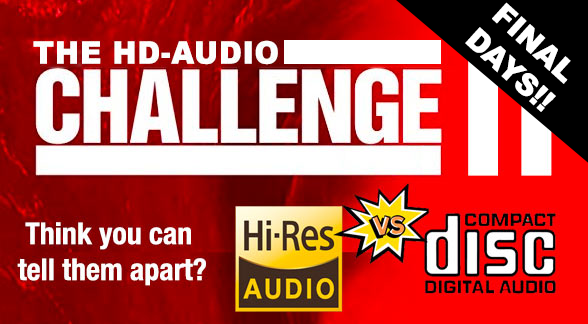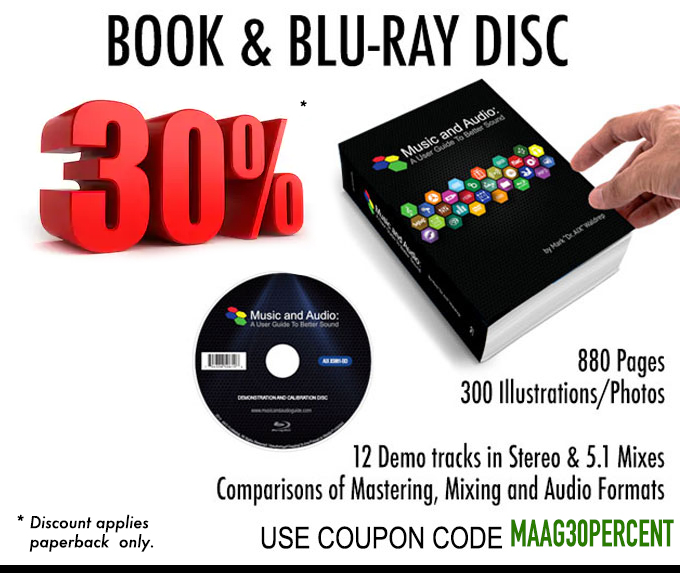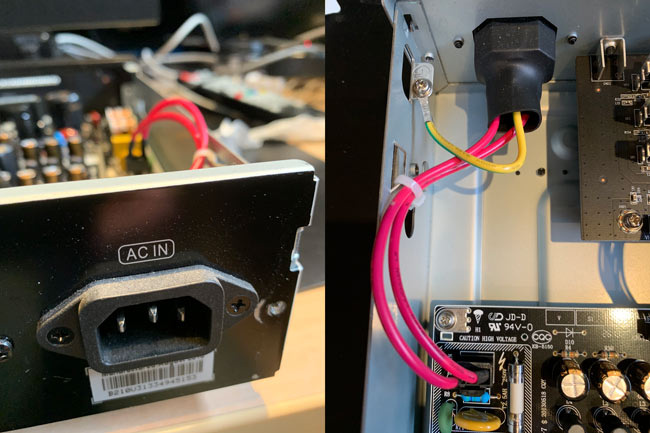Final Days! The HD-Audio Challenge Ends Soon.
I’m guessing that all of us have some extra time on our hands due to the pandemic that is wreaking havoc around the world. While our hopes and thoughts go out to those impacted by this horrible affliction, it may be an ideal time to stay at home and indulge in some focus music listening…and maybe carve out a few moments to participate in the HD-Audio Challenge II, which will be coming to a close in just a few days. I’ll be revealing the answers and providing a summary of the results next week.
In case you’ve missed it, there’s still time to sign up, download the 40 tracks, do some serious listening, and submit your results. You can learn more and sign up at: https://www.realhd-audio.com/?p=6713

An Update…
I have been overwhelmed by the number of audiophiles wanting to participate in the survey. Over 1500 individuals have requested the credentials for accessing the files, over 500 have confirmed they received them, and over 260 have responded with their choices using this link: HD-Audio Challenge II submission form. As far as I know, no other research project on high-resolution audio has engaged a larger pool of participants…by far!
For example, a paper titled Discrimination of High-Resolution Audio without Music by two Japanese researchers Yuki Fukuda and Shunsuke Ishimitsu of Hiroshima City University in Hiroshima-shi, Japan used gaussian impulses and white noise in their study. They specifically avoided using music! From the abstract of their AES paper:
“Nowadays, High-Resolution (Hi-Res) audio format, which has higher sampling frequency (Fs) and quantization bit number than the Compact disc (CD) format, is becoming extremely popular. Several studies have been conducted to clarify whether these two formats can be distinguished. However, most of the studies were conducted by only using music sources to reach a conclusion. In this paper we will try to bring out the problems due to the primary use of music sources for experimental purposes. We will also answer the question related to discrimination between hi-Res and CD formats using sources other than music, such as noise.“
Their study involved seven participants with an average age of 22. Only seven! And they listened to noise bursts are different sampling rates.
I recognize that my survey may have some flaws but I know it avoids some of the most common mistakes made by previous studies. The widely known paper by Brad Meyer and David Moran of the Boston Audio Society titled Audibility of a CD-Standard A/DA/A Loop Inserted into High-Resolution Audio Playback, which claimed that CD-Standard audio fidelity was indistinguishable from high-resolution audio sources failed miserably because ALL of the source recordings they played for their members were NOT recorded in high-resolution. It makes it very hard to tell the difference when there wasn’t any!
The current study uses native 96/24 PCM recordings of the highest fidelity and allows participants to compare them to CD-Standard versions. At least I’m using real high-resolution recordings.
I can report that the average age of the participants in my study is over 50 years. I would love to have more young people get involved but the audiophile hobby is definitely an older man’s game. Just look at the typical visitor to one of the high end audio shows…it’s filled with older guys. It’s rare when the younger demographic shows up.
A Music and Audio User Guide 30% OFF Special
In these challenging times, all of us are being asked to sacrifice and find ways we can help others. I have talked to a few of my musician friends over the past couple of weeks. They are really struggling because ALL their gigs have been cancelled or delayed. Guitarist Dorian Michael, a very close friend and artist on AIX Records, was here recently and told me that he’s taking on students and teaching via FaceTime instead of traveling up and down the west coast doing concerts as he had planned. And who knows how long this situation will last?
So I encourage you to support the artists on my label by buying a disc or asking for a music download (more on that in a moment). I will extend the AIX30Percent coupon until the “stay at home” orders are lifted.

In addition, I’m discounting paperback copies of my book Music and Audio: A User Guide To Better Sound by 30% for the same duration. Use the coupon code MAAG30Percent during checkout. Note that this applies only to the paperback version. But anyone that purchases the paperback will get the eBook in PDF format as well.
I will donate 25% of the sales receipts to an as yet to be determined GoFundMe campaign in support of struggling musicians.

A Funny Review…
It never gets old. Imagine you are a paid writer for an audiophile publication and your editor asks you to review an expensive power cord or pricey USB cable. You don’t have the option of declining because it’s your job. And the vendor is a support of your publication through sponsorships of advertising. If you’re an unpaid writer who has an online magazine or contributes to one of the many audiophile websites and hopes to secure some free cables, you might volunteer a review.
I ran into a couple this week that should get awards for creative use of the English language. Maybe this one will bring a smile to your face as they did for me…(better than getting angry, right?)
“The Product Name Omitted maintain a very deft touch on the music, with a strong accent on detail resolution, but not at the expense of warmth or musicality. What I found particularly attractive was the way it could help unmask subtle microdynamic cues in the musical performance, ones that usually lurk at or just below the sonic waterline”
What the heck is the “sonic waterline” or the “detail resolution”?!? And once again that tired and true fallback, the “microdynamics.” There is no such thing. And remember that this $3500 power cord plugs into the back of my OPPO BDP-205 and where the electrical signals find their way to the power supply circuit board through 12-gauge stranded wire at decidedly less cost.

Folks, we have to do better. Stay safe and have a good week.


“Sonic waterline”.
We have a fantastic satirical magazine over here in the UK called Private Eye that runs a column called Pseuds Corner that people can spot and contribute pretentious BS gems like this to.
Good morning John. It’s never ceases to amaze me when I read BS like this…and the guy that wrote it is a well know audio writer.
I find it astonishing that audiophiles simply ignore the wiring inside of their gear and speakers which consists mostly of run-of-the-mill cables. I don’t even mention the wiring inside of the walls of their houses. They don’t see it, so it doesn’t matter? Yet they don’t hesitate to spend thousands of dollars on visible “high-end” cables. What do they think will these cables do? This reminds me of little children who think they are invisible when they close their eyes.
Very true…thanks.